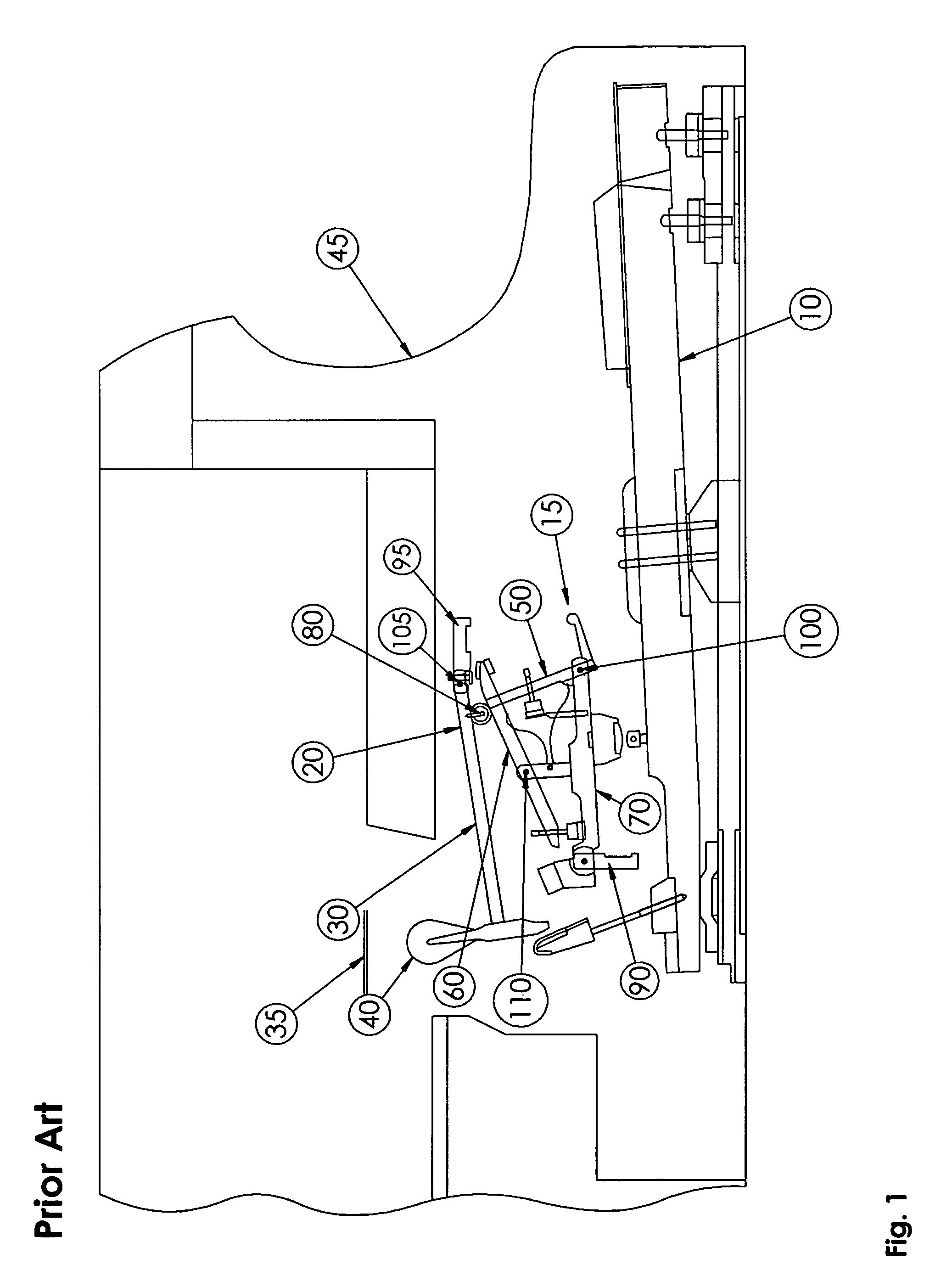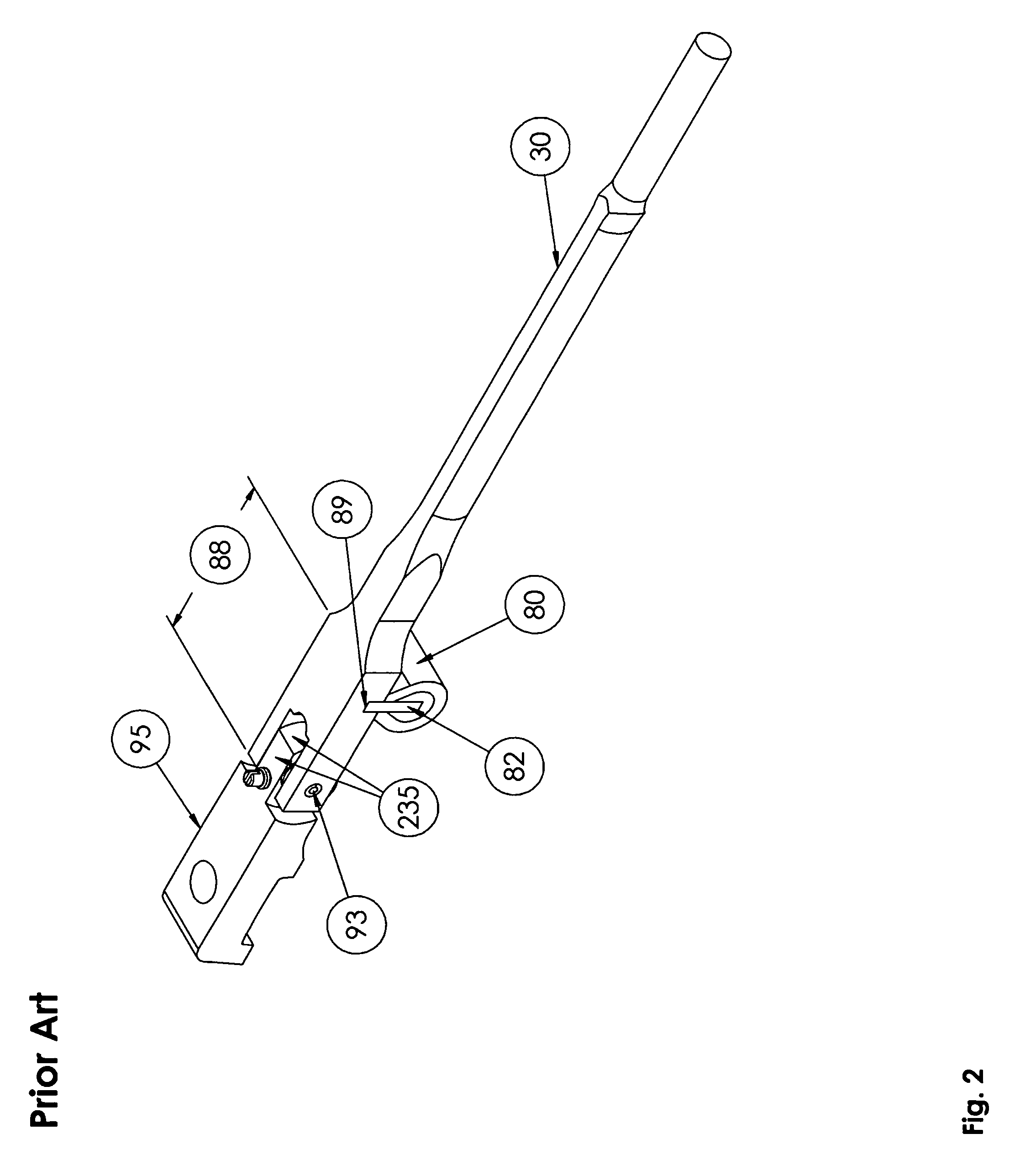Hammer assembly for grand piano
a hammer and grand piano technology, applied in the field of key-operated percussion devices, can solve the problems of reducing the energy of key depression, wasting system energy or energy loss, and affecting the responsiveness of the piano action, so as to increase the efficiency of manufacture and maintenance, increase the efficiency of manufacturing and maintenance, and the effect of rigidity
- Summary
- Abstract
- Description
- Claims
- Application Information
AI Technical Summary
Benefits of technology
Problems solved by technology
Method used
Image
Examples
Embodiment Construction
[0034]A hammer assembly of this invention comprises: a hammer 40; a hammer shank 30; a tubular lever interface 20; and a moveable knuckle 240. This invention includes novel hammer shanks 30, novel tubular lever interfaces 20, and novel moveable knuckles 240, where an assembly of such can be attached to prior art hammers 40 which are typically made of hornbeam wood and felt. The hammer assemblies of this invention can be installed into any grand piano of any brand.
[0035]All hammer shanks 30 of this invention are essentially cylindrically shaped made from composite or plastic material with an overall outer diameter range of 1-8 mm. Such hammer shanks 30 can be manufactured with less weight and more rigidity than their wood counterparts. This is particularly so when the hammer shank 30 is made of hollow form because hollow parts naturally weigh less than non-hollow parts. Thus, best mode hammer shank 30 of this invention is hollow in the center as depicted at 210. The hollow cross sect...
PUM
 Login to View More
Login to View More Abstract
Description
Claims
Application Information
 Login to View More
Login to View More - R&D
- Intellectual Property
- Life Sciences
- Materials
- Tech Scout
- Unparalleled Data Quality
- Higher Quality Content
- 60% Fewer Hallucinations
Browse by: Latest US Patents, China's latest patents, Technical Efficacy Thesaurus, Application Domain, Technology Topic, Popular Technical Reports.
© 2025 PatSnap. All rights reserved.Legal|Privacy policy|Modern Slavery Act Transparency Statement|Sitemap|About US| Contact US: help@patsnap.com



